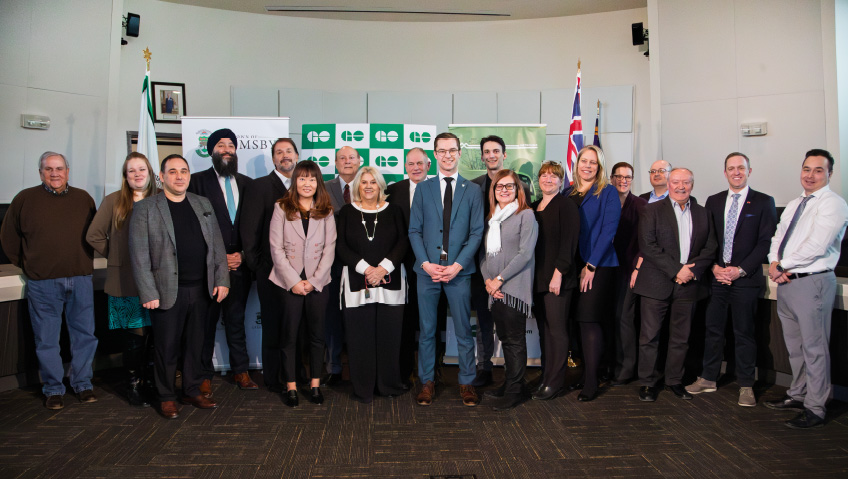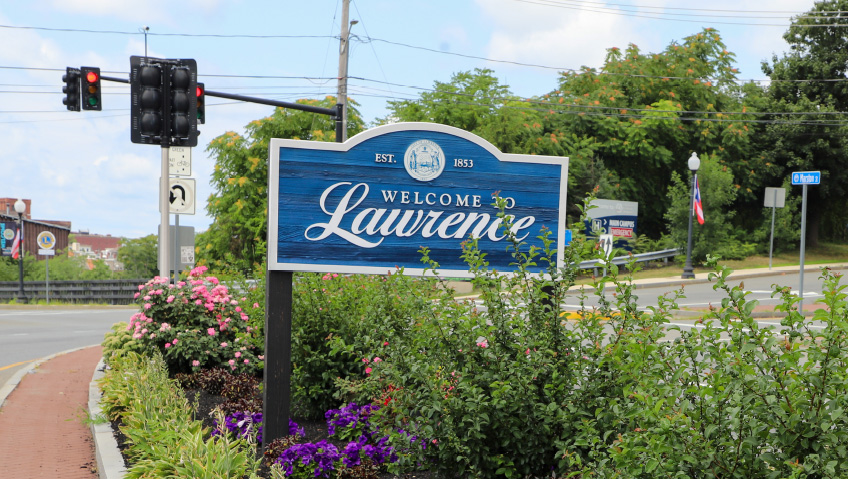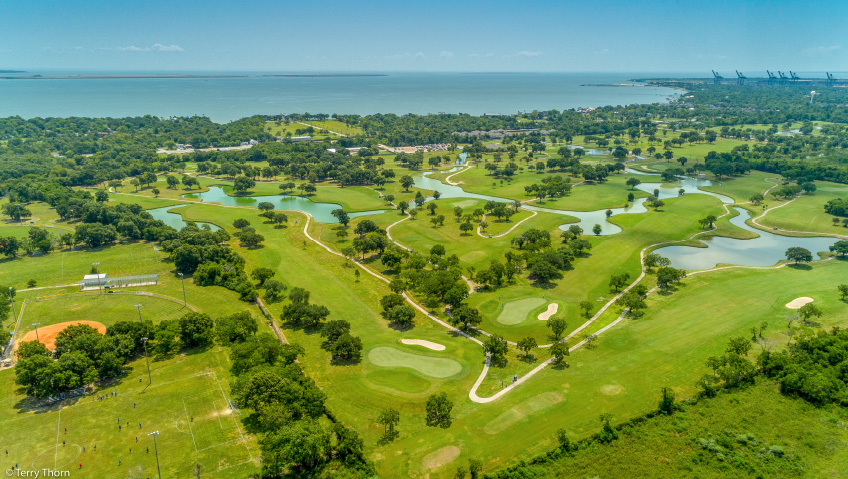With 266 sunny days per year, thousands of nature trails, a top research university, and a thriving job market, Flagstaff, Arizona is an ideal place for work and play. The city’s elevation—6,903 feet—leads to relatively mild weather, so residents can enjoy the outdoors whatever the season.
“Across the Southwest, you’re going to find very few places where you’re going to be able to enjoy being outside for the entirety of the year,” says Jack Fitchett, Business Attraction Manager for the city of Flagstaff. “We have four seasons.” And yes, this includes winter, when tourists and residents flock to the local ski resort, Arizona Snow Bowl.
In addition, Flagstaff boasts an ideal balance between metropolitan opportunities and small-town charm. “It’s got these larger city amenities, but it’s still got that small-town feel,” Fitchett says. “And it’s coupled with great weather. You can actually get outside and you don’t need to suffer the 120 degrees that’s currently going on with some of our friends down south.”
Home to Northern Arizona University (NAU) and Coconino Community College, Flagstaff’s population is particularly well educated, boasting the highest number of bachelor degrees per capita in the state. This emphasis on education is reflected in the city’s high-ranking public education, which includes a number of charter schools. “Compared nationally, Flagstaff does quite well,” Fitchett says of the local school system.
In terms of local industry, Flagstaff has a strong historical connection to astronomy, space exploration, and the aerospace sector. Pluto was discovered at Flagstaff’s Lowell Observatory. Founded in 1894, the research center continues to play an important role in both education and exploration, using the fifth largest optical telescope in the continental United States to conduct research.
“We also did a lot of the lunar rover testing just outside of Flagstaff for several of NASA’s missions,” Fitchett shares. “That’s a great bit of history.” In 1963, the USGS Astrogeology Science Center was founded in Flagstaff to map the moon and to help train the Apollo astronauts. The center plays an important role in space exploration to this day, with researchers continuing to test space suits and pressurized rovers in the nearby volcanic field for future missions. “Flagstaff has a really strong connection to space exploration,” Fitchett says.
The nearby Meteor Crater, also known as Barringer Crater, was an ideal spot for NASA to train astronauts. One of the few places on the planet with a fully exposed and fully intact meteorite impact site, the vast crater emulates the surface of the moon. Today, the 550-foot-deep, nearly mile-long crater has become a significant tourist attraction with guided tours, the Discovery Center & Space Museum, the Collision! 4D Theatre, and one of the Apollo 11 Space Capsules in which Neil Armstrong, Buzz Aldrin, and Michael Collins trained for the moon landing.
Naturally, aerospace companies have flocked to the area. Katalyst Space Technologies recently relocated to Flagstaff to take advantage of all the area has to offer the sector. Partnered with the Air Force Research Lab, the United States Space Force, and commercial organizations, the company’s goal is to revolutionize satellite operations by providing upgrades post-launch, using in-space servicing. This will give satellite operators a second chance to add capabilities and features to outdated equipment, allowing them to stay competitive as technology advances.
In business since 1996 and based in Flagstaff since 2001, Novakinetics produces composites for OEM aircraft manufacturers, including next-generation ballistic protections systems.
Biotech is another major sector in Flagstaff. Founded in a family home 65 years ago, W. L. Gore & Associates has grown to be one of the area’s largest employers and a leading-edge biosciences company. Axolotl Biologix is making exciting progress developing and producing human biologics and biological-related products. And Poba Medical is a market-leading medical balloon developer and manufacturer. “They’ve been able to grow quite substantially, Fitchett says. “They’ve gone from this start-up idea to a whole manufacturing processing business where they’re now filling orders internationally.”
Meanwhile, TGen North—home to TGen’s Pathogen & Microbiome Division—has a team of leading scientists and researchers working on diagnostic, analytic, forensic, ecologic, and epidemiologic research of microbes. TGen North is a founding member of STEM City, an organization that helped Flagstaff earn the title of America’s First STEM Community.
“With that kind of collaboration [from the STEM community] and with the access to NAU and those professors, as well as the great access to labor that’s coming from those graduates, those businesses have done really well,” Fitchett says. “It makes it very easy for me to sell Flagstaff as a location for other biomedical companies.”
Advanced manufacturing is another major industry in Flagstaff. “This is probably where we’ve seen the most growth recently.” For example, UACJ Automotive Whitehall Industries (UACJ-Whitehall), which manufactures precision fabricated aluminum extrusions, recently opened a location in Flagstaff. “They’re planning to invest about $65 million dollars in capital investment and create 350 jobs, and all of that is well underway,” says Fitchett.
This investment is related to an overall upward trend. “It ties in to the larger electric automotive sector that’s been rapidly expanding in Arizona,” he says. “It’s been a really great, growing sector, so it’s been awesome to see Flagstaff take advantage of those high quality jobs that are being produced from that specific industry.”
The city is working hard to keep attracting companies to Flagstaff, with several key incentives. The Job Creation Incentive offers an incoming company up to $25,000 for a variety of different expenses, “whether that’s relocation expenses, new employee training, or some workforce development measures,” Fitchett explains. Funding is available for companies that are within a targeted industry and that create ten or more jobs within Flagstaff’s municipal boundaries with median wages above the county median wage.
The Development Reinvestment Incentive reimburses new businesses for local construction contracting taxes that were paid for new improvements or developments. This money can be used for relocation expenses, job training, workforce development, or site improvement projects that involve beautification efforts, energy efficiency, public roads and lighting, code-required landscaping, public water, and wastewater.
The Business Retention and Expansion Incentive, meanwhile, provides up to $30,000 for companies that have been in Flagstaff for over a year. The money primarily funds workforce development training and business improvements. “That’s another great program [because] once we attract businesses here, that incentivizes them to stay as well,” says Fitchett. “And then, obviously, we have a great relationship with the Arizona Commerce Authority, which has a whole slew of very specific, but also really great incentives for a variety of different industries, available at the state level. The three [Flagstaff incentives] are additional tools in our tool belt and help differentiate us a little bit from some of the other northern Arizona communities.”
Flagstaff currently has two development projects underway that will help keep the city’s industries thriving. A city-owned, 32-acre parcel adjacent to the airport is planned to be developed into a research and development hub. “It’s going to create up to 750,000 new square feet of space that can be used for either light manufacturing or R&D purposes that really fit into [Flagstaff’s target industries] so that businesses that are already here can continue to grow and we can continue to attract other businesses that have the ability to partner with some of our existing players,” Fitchett shares. “And it’s really going to be a great project, a state-of-the-art space to allow them to do higher-end technology delivery and research.”
In addition, Northern Arizona Healthcare (NAH) is working through its planning processes to construct a major new facility in Flagstaff that will make health care more accessible to the entire region. “They’re looking to make a really huge investment in our community and therefore, Arizona, to provide the best possible medical and health care that they can to our residents and, really, the residents of all northern Arizona, because it will be the only level one trauma center in Northern Arizona,” Fitchett says. “It’s a huge capital investment from NAH—over $800 million at this point.”
Additional land (130+ acres) is available adjacent to the hospital complex for other medical-related developments, as well as for businesses within the retail, restaurant, and hospitality sectors that will serve people utilizing the new medical facilities.
To be sure, the city of Flagstaff is eager to keep attracting new businesses and to keep supporting existing ones well into the future. “We want to continue to provide high-quality jobs and opportunities to our residents,” Fitchett summarizes. “I’m really looking forward to what’s on the horizon.”






